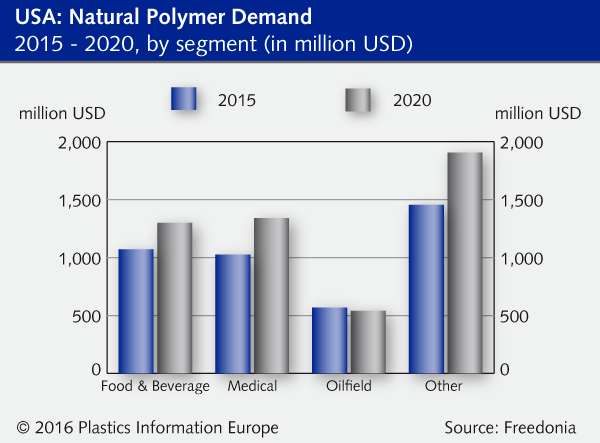
US demand for natural polymers (biopolymers) is forecast to increase at a rate of 4.3% annually, reaching USD 5.1 bn in 2020, or 862,000 t, in consumption. Growth will be driven by demand for natural ingredients in the food and beverage industry and the medical market, supporting use of cellulose ethers and starch and fermentation polymers, says US market researcher Freedonia (Cleveland, Ohio; www.freedoniagroup.com) in its recently published study, “Natural polymers.
Cellulose ethers are the largest product type, representing a third of the market, and methyl cellulose is expected to remain market leader through the forecast period. However, demand for hydroxyethyl cellulose (HEC), microcrystalline cellulose (MCC), and carboxymethyl cellulose (CMC) will also be significant. Methyl cellulose’s largest application is in construction, where it has a variety of uses, including plastering, flooring, grouting, mortaring, tile adhesion and stucco.
Starch and fermentation products will advance the most rapidly of all natural polymers through 2020, with PLA accounting for much of the growth. As production capacities have increased, PLA is one of the few natural polymers that has exhibited declining prices. This has been a great benefit for the packaging segment, which represents by far the leading market for PLA resins, the study says.
Freedonia analyst Larry Catsonis said: “Hyaluronic acid will also support starch and fermentation products gains, as it continues to be used to relieve joint pain in orthopedic injections and will also gain market share from collagen as both a dermal and topical tissue filler in cosmetic applications.

The food and beverage industry will relinquish its spot as the largest market for natural polymers to the medical industry in the forecast period, Freedonia said. Growth in medical applications will be driven by strong demand from collagen in wound care as well as cellulose ethers used in pharmaceuticals.
Additionally, declining oil and gas production, mirroring price declines into 2015, led to less demand for oilfield natural polymers, especially guar gum, which is used as a carrier for placing sand into fractures and as a top-hole drilling fluid.
Release Date: 06/07/2016













